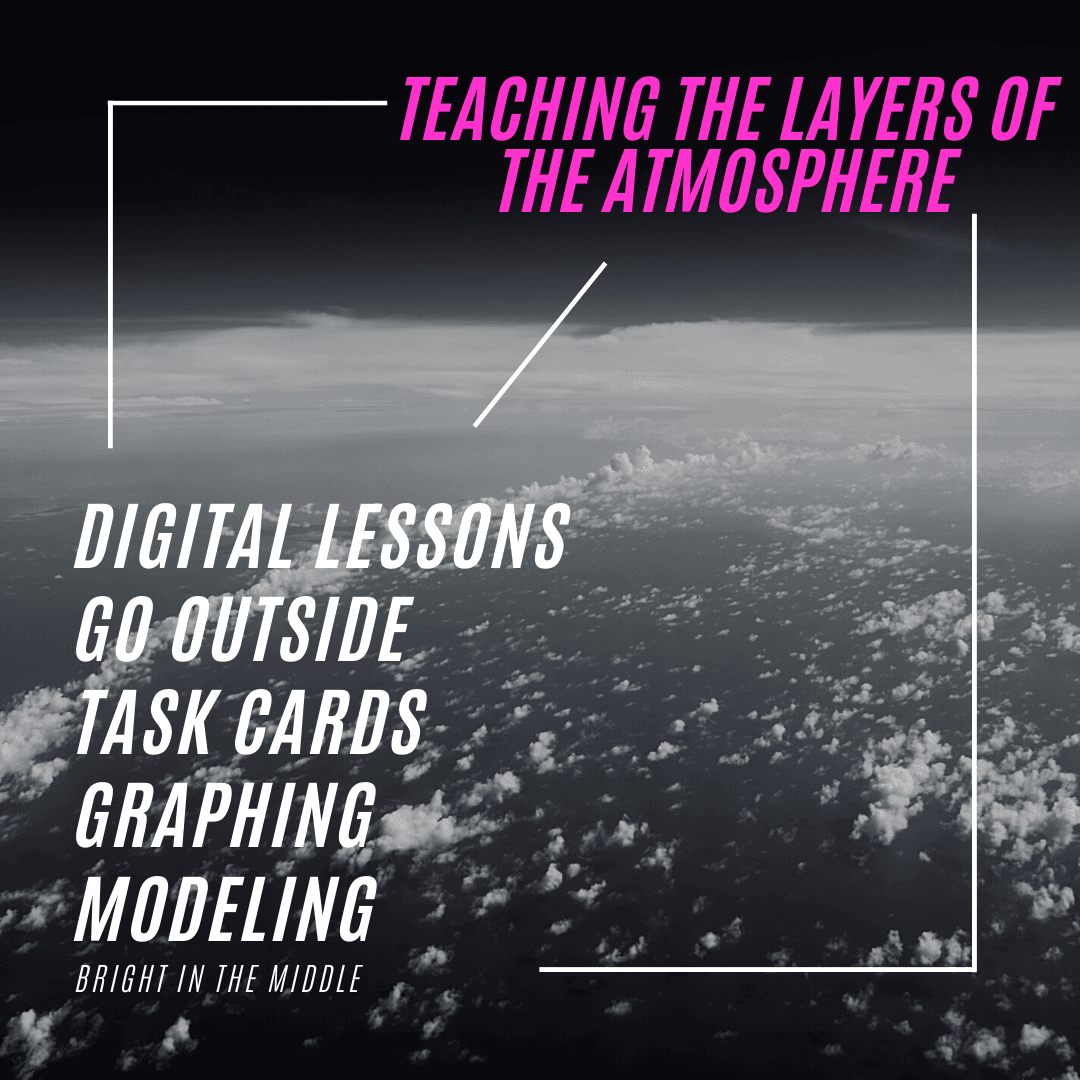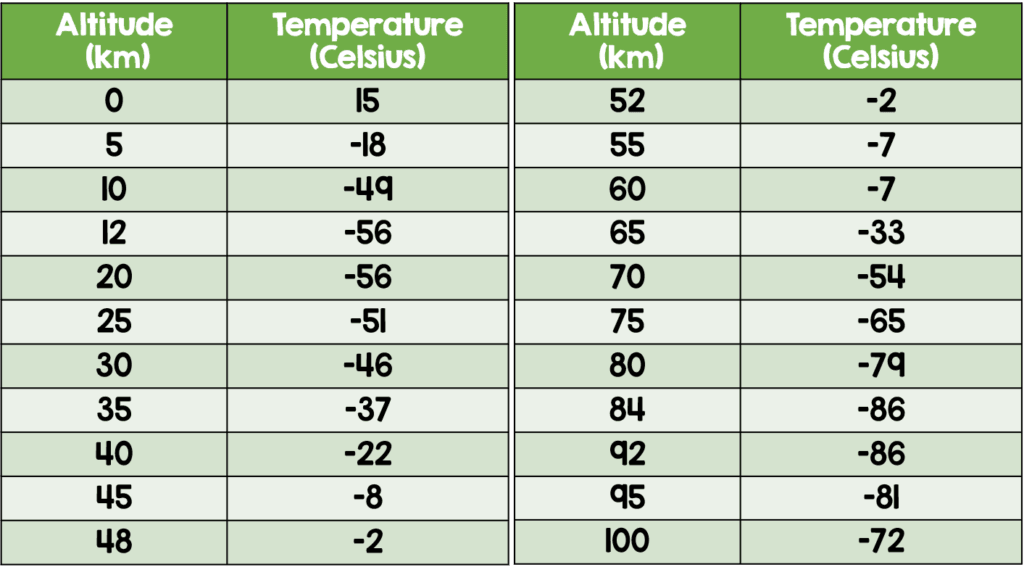Activities for the 5 Layers of the Earth’s Atmosphere
Are you teaching about the 5 layers of the Earth’s atmosphere? Honestly, and truly, besides the human body unit, teaching atmosphere and weather is my absolute favorite! I think that it is absolutely fascinating to learn about things that are so hard to see from our perspective, but with the help of science and technology, we are! One of my favorite topics is the 5 layers of the atmosphere.
Of course, we are able to see the troposphere because we live here, but what about the stratosphere? the mesosphere? thermosphere? and exosphere?
There are SO many activities that your students can do to help them learn and understand the 5 layers of the atmosphere! There are so many ways to bring the WOW Factor revolving around the 5 layers of the atmosphere!

Go Outside
This is the activity that I would use as my hook. Unfortunately, I don’t think my students are initially as interested in the atmosphere as I am; however, students are always curious and always eager to get out of the classroom, so take them outside and have them to look up at the sky and ask them questions such as:
- What do you see?
- What is the atmosphere?
- What does the atmosphere consist of?
- How far can you see?
- How do scientists know what else is out there?
You could go on and on, but the goal is to spark their interest. You can also have good conversations about the composition of the atmosphere, clouds, weather, and more! Going outside is just ONE of the engaging strategies I use in my classroom.
5 Layers of The Earth’s Atmosphere Interactive Lesson
Whether you like a more teacher-centered classroom or a student-centered classroom, there are multiple uses of digital interactive lessons. They are perfect for individual learning, direction, can be used with Nearpod, distance learning, small groups/partners, and science centers.
I think that it is very important to not throw a bunch of information at students and expect them to know it. I create lessons that allow students to look at bits of information and then be able to process and apply that information before learning something else. It helps decrease cognitive load.
Not only is decreasing cognitive load a plus, but these lessons are fun, engaging, and allow students to think critically! Students are given content, and embedded within the content, are multiple choice questions, sorts, type in the box questions, and more!
How many layers are in the atmosphere? Which layer of the atmosphere contains the ozone layer? What is the hottest layer of the atmosphere? This lesson helps to answer all of these questions!
Design a Model of the Atmosphere
After students learn about the 5 layers of the Earth’s atmosphere, you can let them bring out their inner creative side and STEM brains and get them designing. I would provide them with a variety of materials such as construction paper, paper towel rolls, popsicle stick, oil, vinegar, cardboard, pretty much ANYTHING, and let students create. This would make a great makerspace activity.
Don’t have the resources? Students can still design a digital model of the atmosphere. Students can use Google Slides, PowerPoint, Canvas, or something else to design their model.
If they really want to get fancy, try the 3-D printer!
Layers of the Atmosphere Sort
There is no doubt that sorting activities are great for critical thinking and knowledge development. Cut-and-paste sorts are great for science interactive notebooks, class work, review, pre-assessment, and more! In this sort, students cut out the pictures and phrases and glue them to the layer of the atmosphere that they belong to.
Want to give your students a challenge? Have them to cut out the pictures and phrases and sort them BEFORE giving them options of categories. Have them to create their own!
Describe the 5 Layers of the Earth’s Atmosphere by Graphing Atmospheric Temperatures
This was always one of my favorite activities to do because it incorporated math, but also helped students to make sense of why they classify different layers of the atmosphere.
You can make this activity as simple or as complicated as you would like. Depending on your students’ skill level, you can just give them a sheet of graph paper and say “go”, or you can create a pre-made graph that would take out some of the work for them.
Then, students could begin plotting the points below:

Once graphed, students can visually see when temperatures are increasing and when they are decreasing. Then, they can label the troposphere, stratosphere, mesosphere, thermosphere, and exosphere.
Atmosphere Task Cards
So, you’ve already covered the composition of the atmosphere and the layers of the atmosphere and now it’s time for you review. What do you do? TASK CARDS! I love task cards. It gets students out of their seats and can still be used during the 2020 era. Just put them 6 ft. apart! There are so many ways to use task cards in your classroom!


[…] Layers of the Atmosphere […]